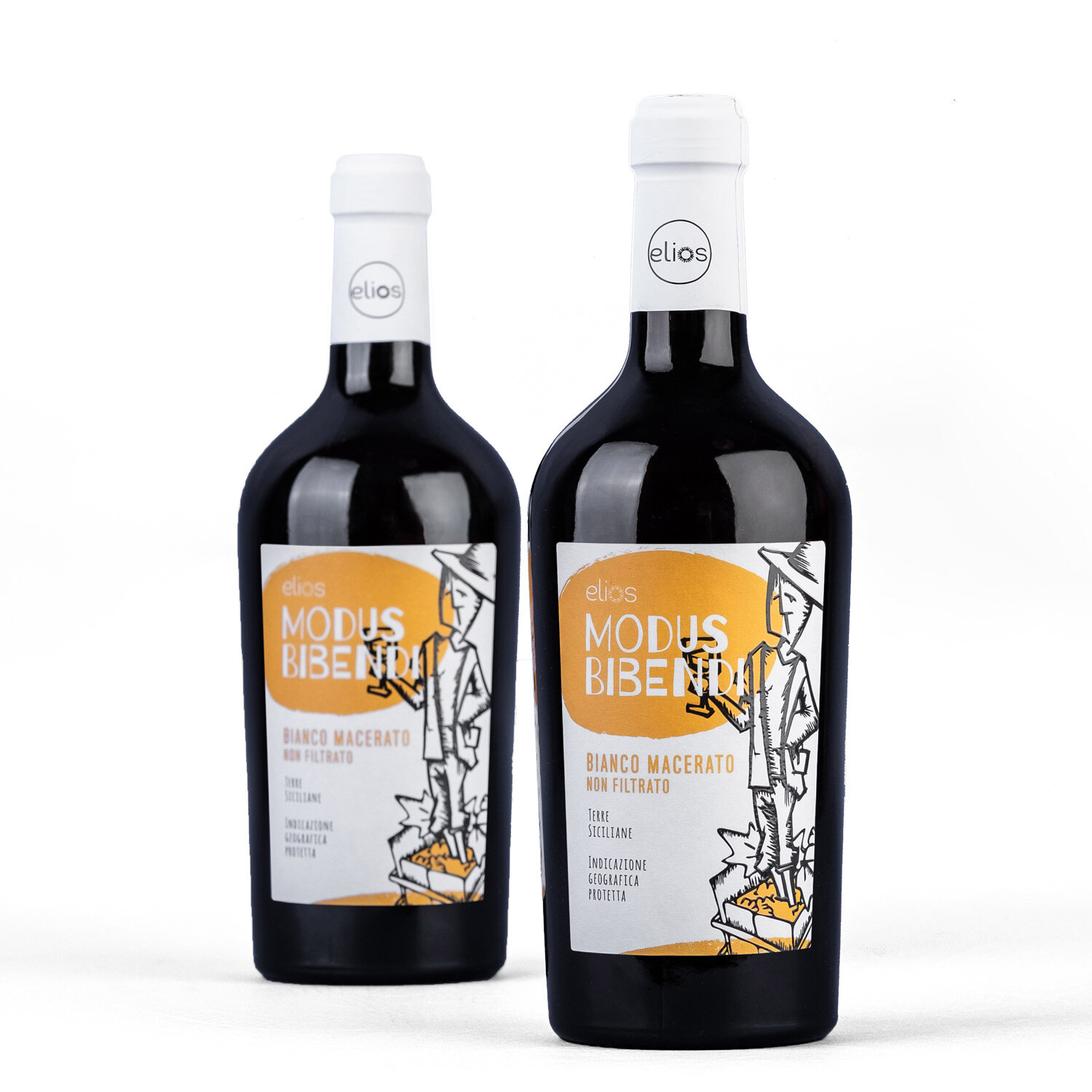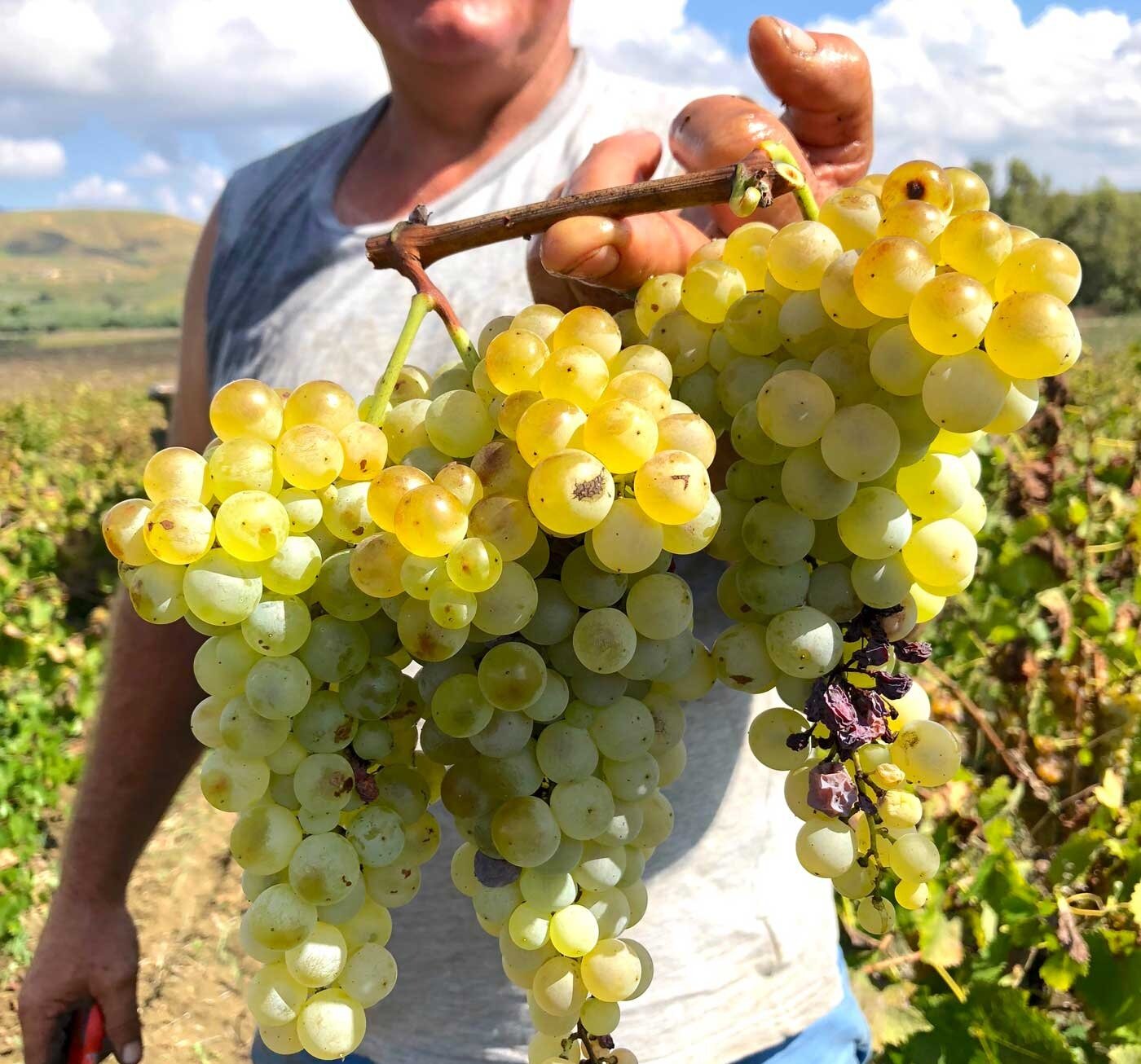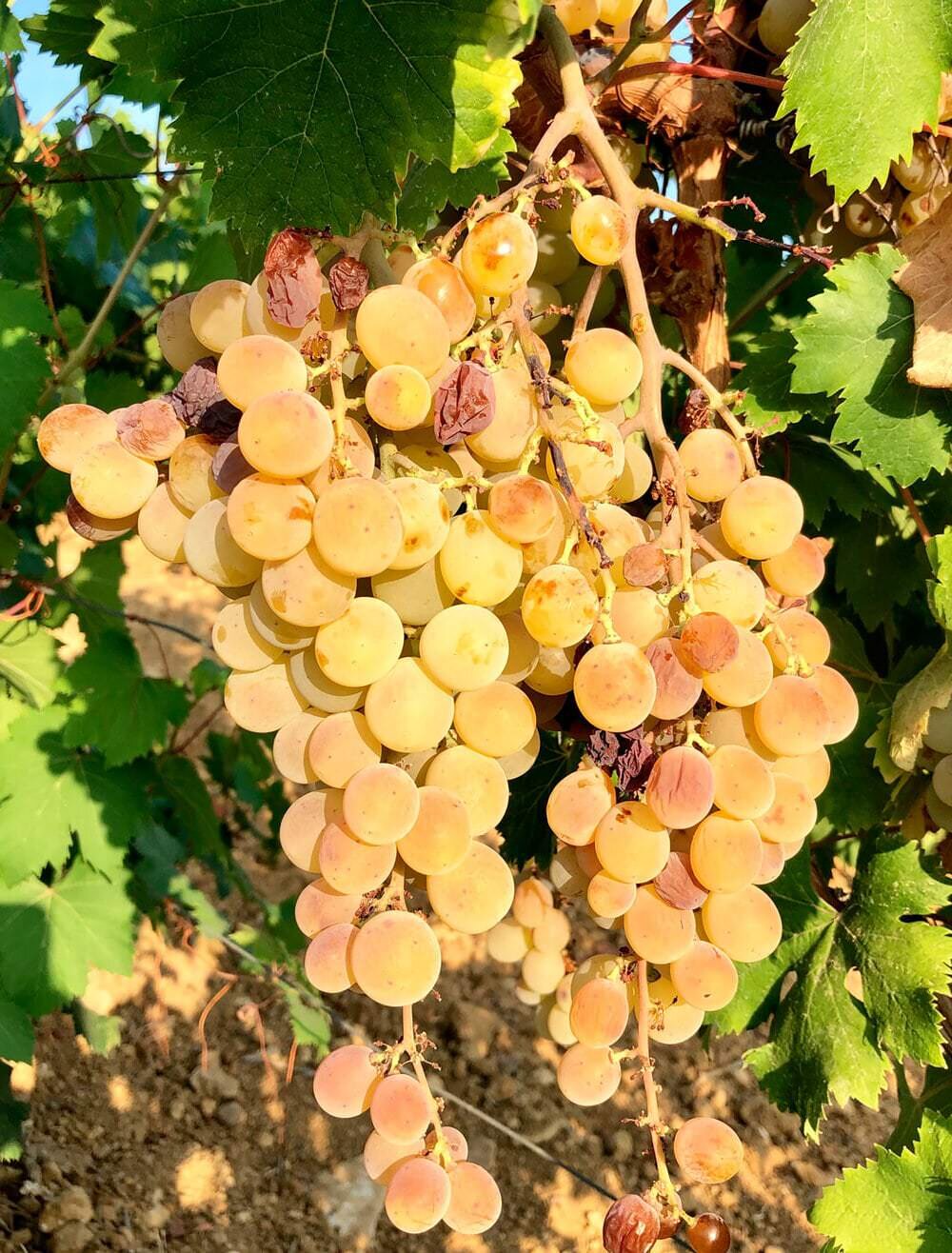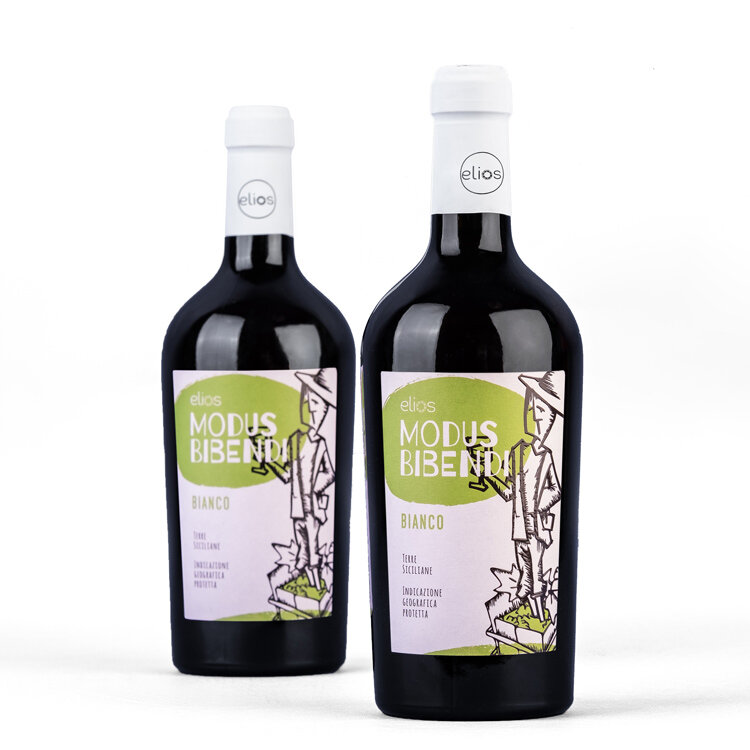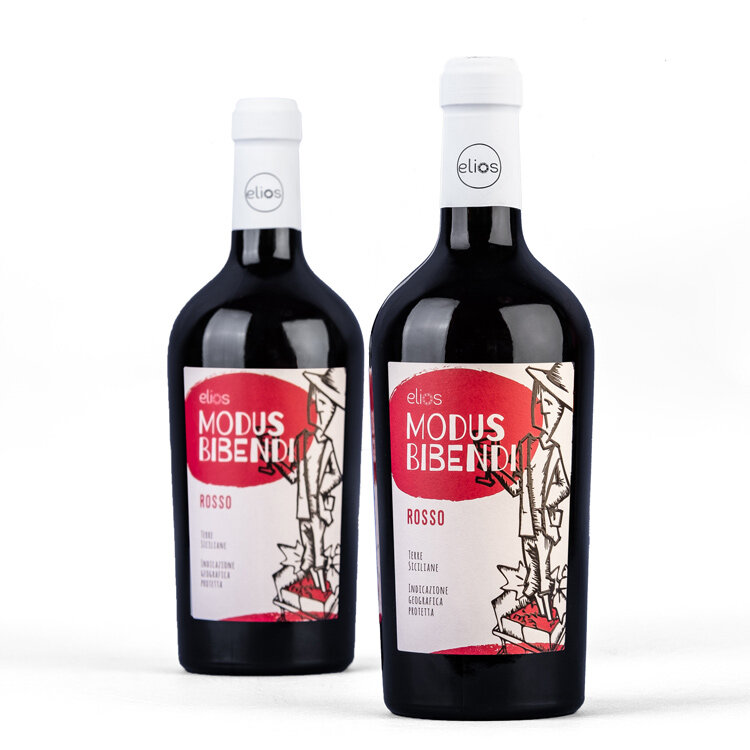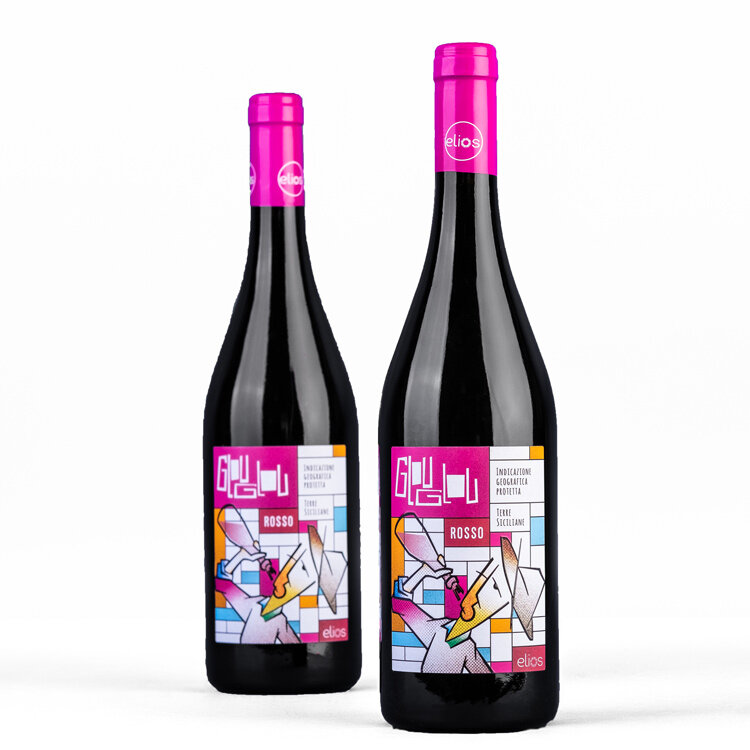OUR NATURAL ORANGE WINE
WHAT IS AN ORANGE WINE OR SKIN CONTACT WINE ?
[definition by Wine Enthusiast]
Skin contact is another term for maceration, or the period during winemaking when the grape skins remain in contact with the juice. Most red wines are made by fermenting grapes with their skins for the entire period of alcoholic fermentation. Thus, when people talk about skin-contact wines, they usually refer to white grapes that are vinified like red wines. The term Orange is another way to indicate this category: this style of wines can also be known by their color references of having an amber or orange tinge that the base white wine receives due to its contact with the coloring pigments of the grape skins.
WHAT IS A NATURAL WINE?
NATURAL WINES ARE made only with organic/biodynamic grapes, without adding or subtracting anything in the cellar. No additives, no chemicals, no aromas, no selected yeasts, low sulfur, that’s it.
MODUS BIBENDI BIANCO MACERATO from
Catarratto, Zibibbo, Grillo grapes
GRAPES VARIETIES: Catarratto, Zibibbo, Grillo
MACERATION 20 days - SOIL clay, sand, stones - AGEING 7 months in stainless steel tin
WINEMAKING natural, spontaneous fermentation
VINTAGES AVAILABLE: 2018
HOW THE bianco macerato CAME ABOUT
We grow a number of different grape varieties on our agricultural holdings.
Our vineyards, which extend over three macro-areas located around Alcamo up to a maximum distance of 15 km away, have different soils and microclimates, some are close to the sea and others are more inland, and the grapes reflect this diversity.
Some grapes benefit from a perfect balance and deserve to be vinified on their own, such as those from the Camporeale area, while other grapes have their merits but also some shortcomings.
This is where the ability to interpret your terroir and your grapes comes into play; in our case it has given rise to the blend of our Bianco macerato wine, made from Catarratto grapes from the Monreale area (inland) and Grillo and Zibibbo grapes from Alcamo (near the sea).
The Catarratto gives the wine its acid “shoulder” (which Zibibbo does not have), the Grillo gives it its body (which is useful to tie together the two extreme components of the other two grapes) and the Zibibbo provides the aromatic part; macerating the skins perfectly complements these features.
THE VARIETIES: CATARRATTO, ZIBIBBO, GRILLO
CATARRATTO
The variety is grown all over Sicily, though concentrated in three provinces: Trapani, Palermo, and Agrigento. Traditionally, Catarratto wine was vinified as cheap bulk wine, usually made into sweet goop. With the coming of modern winemaking to Italy, some producers have turned to producing good-quality wine from the variety, with success. A well-made Catarratto has freshness and minerality, a good body, and citrus and herbal flavors. It may also exhibit slightly nut-like tastes. In some cases, the makers have applied some oak-barrel aging as well, which seems to work satisfactorily.
ZIBIBBO
The story of Muscat is complicated, chiefly because the ancestral grape is ancient—it was in common use by the Greeks (as Anathelicon moschaton and the Romans (as Uva Apiane), and has had numerous travels since. Actually, even that is a gross over-simplification, because it refers to the particular Muscat grape we are considering here, the Muscat Blanc (or, more fully, Muscat Blanc à Petits Grains, aka Moscato Bianco, Muscat Canelli, and a lot more—look at the list a bit up-page); the Muscat family of grapes comprises many more types (over 200!) with which we will not deal here. As best anyone knows, their origins lie in Greece.
Of the more than 200 grape varieties sharing "Muscat" (or one of its synonyms) in their name, the majority are not closely related to each other. The exception are the members of the Muscat blanc à Petits Grains and Muscat of Alexandria families. In the early 21st century, DNA analysis showed that Muscat of Alexandria was, itself, a natural crossing of Muscat blanc à Petits Grains and a black-skinned table grape variety from the Greek islands known as Axina de Tres Bias.
Descriptions of the wine: grape-y, with overtones of orange plus the usual roster of floral/spice suspects. The essence of dry Muscat is to retain the floral and fruity/spicy quality (especially in the nose), with a good acid balance; poorly made ones are either not all that “dry”, or else have lost sublety.
GRILLO
Created by an artificial crossing of Catarratto Bianco and Zibbibo (Moscato di Alessandria) in Agrigento, Sicily in 1869 by Baron Antonio Mendola, an agronomist and expert of grape varieties, Grillo is nowadays one of the most cultivated variety in Sicily, after the Catarratto.
Grillo is not an aromatic or flavored grapes, but at its best it is full-bodied, earthy almost to the point of astringency, and can be bottle-aged to benefit. It will have a creamy feel, though with good acidity, and a sense of faint and indistinct but broad-spectrum fruit flavors, tending toward the citrus-y. Balsamic notes and nuts if aged “sur lies”.
[varieties info credits: WIKIPEDIA & thatusefulwinesite.com]
CATARRATTO GRAPES
ZIBIBBO GRAPES
GRILLO GRAPES
CLICK ON THE BUTTONS BELOW
TO KNOW MORE ABOUT THE OTHER WINES
MODUS BIBENDI GRILLO
MODUS BIBENDI NERO D’AVOLA
GLOU GLOU ROSSO FROM
NERELLO MASCALESE
KATAMACERATO FROM CATARATTO

